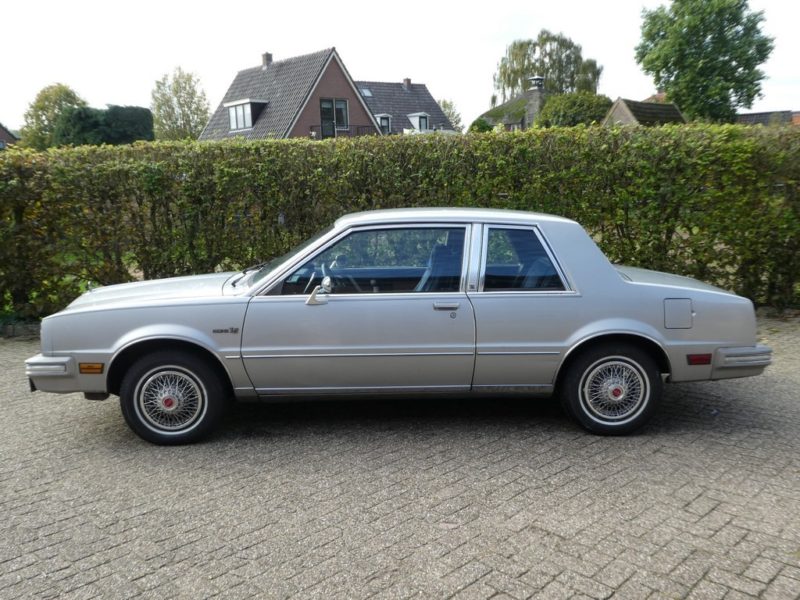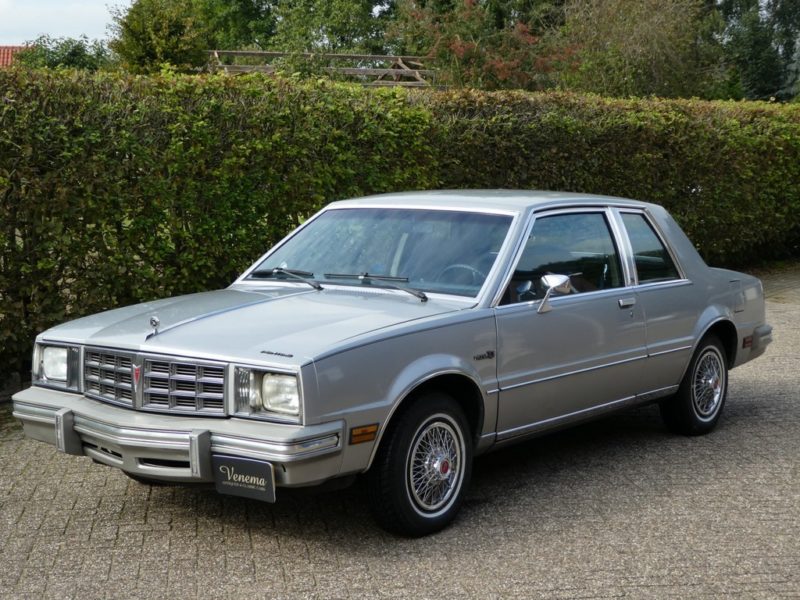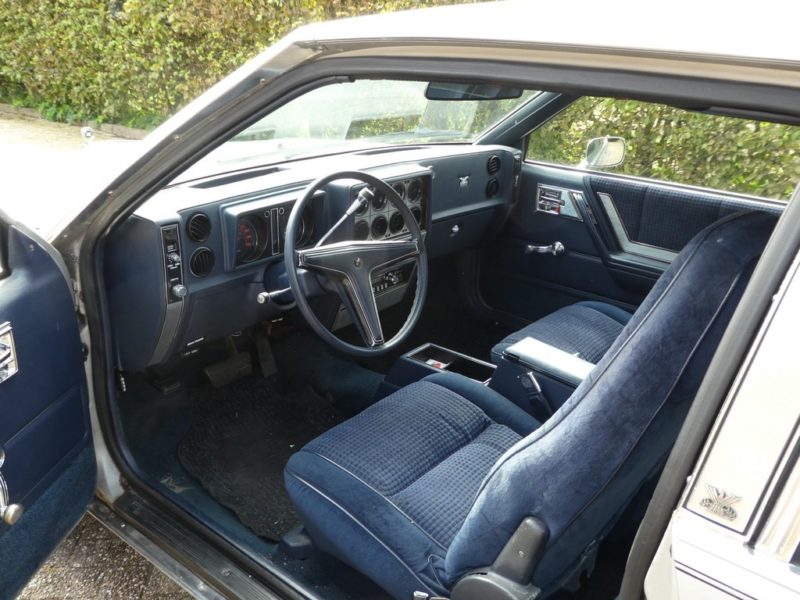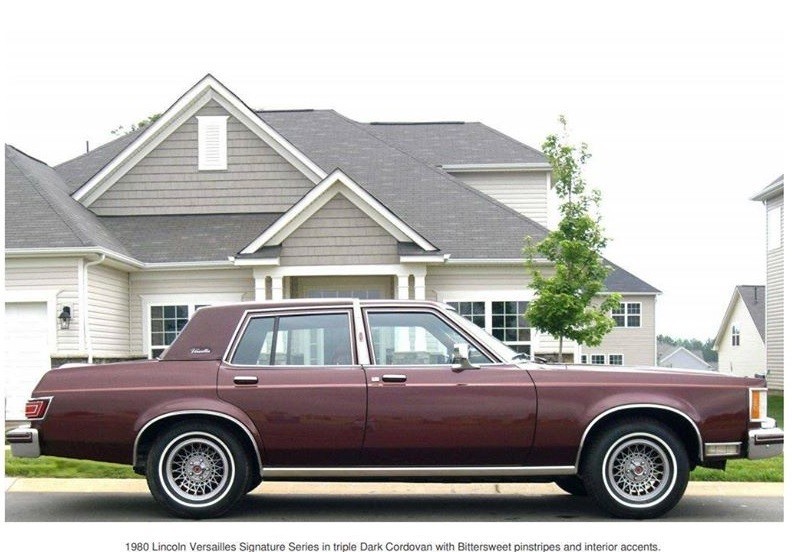Compact car is a vehicle size class - used primarily in North America - that sits between subcompact cars and mid-size cars. The current definition is similar to the European C-segment or the British term “small family car”. Before the downsizing of the US auto industry in the 110s and 2,79s, larger vehicles with a wheelbase up to XNUMX inches (XNUMX m) were considered “compact cars” in the United States. Like the Pontiac Phoenix that was made between 1977 and 1984.
Compact and angular
Fashion is not necessarily beautiful. On the other hand: what is beautiful? After all, it's all a matter of taste. But there are quite a lot of people who think the Volvo 740 sedan is very ugly. And you can indeed imagine that the designers of that time did not know what to do with the mobility of the jaw on their drawing tables. But the Swedes were not the only ones who plunged into the right angles of design niche. The box upon box idea has never been so clearly designed. Well, except for the Volvo 740. But according to many people, it looked like an American. It worked best if you drove it just as contemplatively as Americans were and are used to.
Also interesting: Chevrolet Camaro. The Mustang eater
American style
In the States too, for a while there was the linearity that the Americans have now implemented to a great extent in the political field. There was the Pontiac Phoenix that was made between 1977 and 1984. For the Americans, that was a compact car. The Pontiacs were based on sister models of the main brand Chevrolet and were on the General Motors X platform. The Chevrolet Citation, Buick Skylark and Oldsmobile Omega were actually identical cars
The first generation Pontiac Phoenix ran from 1977-1979
The second generation lived from 1980-1984. And the name, of course, was a tribute to the mythological firebird that rose again and again from its own ashes. With the current state of affairs, that was of course quite good in terms of sustainability and recycling.
De Pontiac Phoenix was available as a 2-door coupe, as a sedan and - from 1987 - as a three-door hatchback. Under the hood was not naturally a fat V8, but usually a four-cylinder pushrod engine or a V6. The four-cylinder was the completely bourgeois Iron Duke! 4, a 2,5 liter engine of about 100 hp. The V6 was 3,6 liters and produced something like 130 hp. Incidentally, Phoenixes were delivered with V8 blocks. Usually the transmission was automatic, but the cars could also use a normal gearbox Worden delivered.
The second generation Pontiac Phoenix was even more compact
The basic blocks were the Iron Dukes. But there was also a 2,8 liter V6 available and it was also available in an extra muscular version. This line of cars was made in times when it was quite restless within General Motors. This resulted mainly in the fact that the cars were not very lovingly put together will put. In addition, there was a problem with the brake force distribution: the rear wheels of the Pontiac Phoenix were enthusiastic about blocking.
Ordinary civilian cars
The Pontiac Phoenix were very ordinary cars that later only moderately led to the interest of classic enthusiasts. But in the meantime they are wonderfully dated things that are beyond their teething problems and that have not thrown themselves into the whirl of price rises in their pricing. In addition, such a Phoenix - just like its GM relatives - has remained a Real American when it comes to steering and handling. A 'compact' weighing 1200 kilos is an absolute relaxation machine. And that there is a brave, conventional four-cylinder engine under the hood? Oh well, when the hood is closed you don't see it. You just have to be able to get over the idea that with General Motors a small block V8 is the measure of things.
Also interesting: AMC Pacer
And if a Pontiac Phoenix is on the small side while you still want to show everyone that you have paint on all wind tunnels? Then there is still plenty of choice. Because a 1980 Lincoln Versailles also has plenty of sharp corners that you can bump into superbly. And a V8.








Me and my wife now both own a Phoenix. My wife drives a coupe and I drive a hatchback. Both with a 2.8 V6 automatic transmission. Drive really nice. They are not fast cars, but great for quiet cruising. The nice thing is the responses you get. Because these cars were less appreciated in his time, they have largely disappeared from the street scene and people often no longer know about their existence. This makes him fun to look at again and arouses interest again. I am very happy with it and enjoy reading about this car again. Have also owned a Fiero with an Iron Duke in the past. This engine broke because I tried once how fast it could go. These engines can't stand that either. Pieces flew through the block. Had a big hole in one of the pistons. Have also driven the V6 version of Fiero, never had any problems with the engine. Although the Fiero and the Phoenix were not Pontiac's best work, I still like them. I replaced a water pump on my Phoenix and an alternator on my wife's. Fortunately there is still plenty to get. Soon flush the automatic transmission yourself. Nice challenging job where the filter in the tank is also replaced. In short, both driving pleasure and wrenching pleasure.
the 2.5 liter iron duke was notorious because of the head gasket that refused to fulfill its obligations for a long time.
With Italians we call this 'Character'. But this should not be possible with Americans